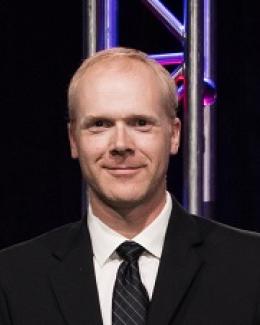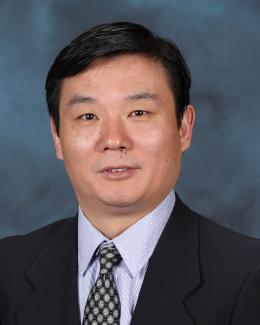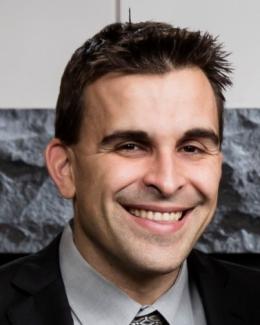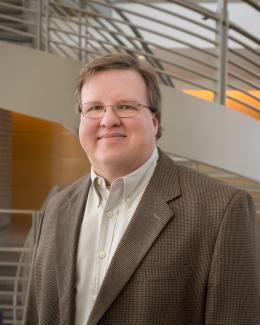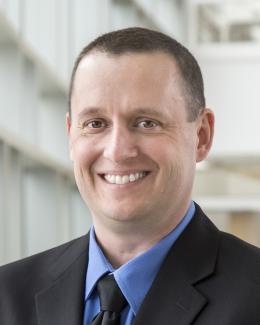May 21, 2018 – Raman. Heisenberg. Fermi. Wollan. From Kolkata to Göttingen, Chicago to Oak Ridge. Arnab Banerjee has literally walked in the footsteps of some of the greatest pioneers in physics history—and he’s forging his own trail along the way.
Banerjee is a staff scientist working in the Neutron Scattering Division at the Department of Energy’s Oak Ridge National Laboratory where he primarily uses neutrons to study the bizarre and exotic nature of quantum phenomena.
“The unknown bothers me a lot. It creates in me a sense of insecurity. In the quantum world, there’s always a certain amount of information you’re losing, according to Heisenberg’s uncertainty principle,” he said. “The question I ask myself is how we can make uncertainty our friend instead of our enemy. That’s what inspires me to do research, to make the unknown known.”
Despite being an early-career scientist, Banerjee has already made an impressive impact on the quantum community. Shortly after joining ORNL as a postdoctoral researcher, he was the lead author on a Nature Materials paper that provides direct evidence for the long-sought Kitaev quantum spin liquid—a lauded find that holds significant promise for advances in quantum computing. Discover Magazine cited the achievement as #18 in its Top 100 Stories of 2016.
A year later, he was published in the journal Science for his contributions to the pursuit of the elusive Majorana fermion—an exotic particle that behaves as its own antiparticle. In 2018, he received the Materials Research Society Postdoctoral Award for his successes.
Early inspiration
He says his enthusiasm for using high-powered instruments to study materials started as a child when he enjoyed looking through telescopes to see the stars.
One of his first epiphanies came to him around age 10 while he was visiting the Birla Industrial and Technological Museum in his hometown of Kolkata, India. There, he was able to observe a rare transit of Mercury across the Sun for the first time.
“I thought how great it was to see Mercury crossing in front of the Sun, to see the sunspots and the flares. But then I became fascinated by the concept of the telescope itself and how it opened up the entire celestial world to me,” he said. “Then I thought about how I could make one myself—and so I did.”
Ultimately, his appreciation for astronomy would put him on the path to physics.
After high school, Banerjee left Kolkata to attend the Indian Institute of Technology in Kharagpur, known for its engineering programs. It was there his attention began to shift from astronomy and astrophysics to a more hands-on approach to problem solving using lab instruments and machines to study everyday materials.
Inspired by greatness
His next destination was Germany, where he earned an internship at the University of Göttingen, an institution well known for being home to several of the founding fathers of quantum mechanics.
“Pioneers of the ‘quantum school of thought’ such as Niels Bohr, Max Born, Max Planck, Hans Bethe, they were all from that place, and that inspired me. It really did,” Banerjee said. “Although I was on a biophysics project at the time, I started paying more and more attention to the role of quantum behavior in matter.”
Reminiscing for a moment, he remembers first reading about the history of ORNL at age 14 in a Bengali novel about the Manhattan Project called the Biswasghatak (a rendition of the Making of the Atomic Bomb by Richard Rhodes). The book describes some of the various and secretive contributions from places like Oak Ridge, Argonne National Laboratory, and the University of Chicago where physicist Enrico Fermi achieved the world’s first nuclear chain reaction.
“What’s neat is the book also mentions Göttingen, where people like Heisenberg and Schrodinger were—really big minds that were there before the Second World War,” he said. “‘And now,’ I thought, ‘here I am, too.’”
Around that time, a machine-learning project using coding to express how species evolve got him thinking about the nature of uncertainty—what drives people to do what they do.
“The fear and uncertainty surrounding death is what drove humans to create technologies to live longer. The same fear of uncertainty can be used to improve life in other ways,” he said. “I had spent a lot of time thinking about what’s beyond the Milky Way, and it dawned on me that there’s so much we still don’t know about ourselves and the things immediately around us. There is so much lost knowledge in the quantum uncertainty in materials.”
From that point on, he says, he was pretty much completely onboard the quantum mechanics train. The next stop was the University of Chicago.
It’s the journey, not the destination
Entering the university, he was awarded the Subrahmanyan Chandrasekhar Memorial Fellowship, a fund set up using the prize money of the Nobel Laureate known for the Chandra X-Ray Telescope and the Chandrasekhar Limit—the point at which a star exceeds 1.4 times the mass of the sun before going supernova.
There, he was encouraged to continue investigating the unknown by trying to answer philosophical questions about the differences between classical and quantum universality—essentially, the differences between the cosmic and atomic world, from planets to electrons.
“So now I’m at the University of Chicago where the first nuclear chain reaction happened and I’m doing experiments at Argonne where Fermi built the Chicago Pile-1 reactor, and I’m continuing to be inspired,” Banerjee said.
At the time, he says he was also drawing inspiration from the role institutions like IBM and Bell Labs played in solving materials challenges to shape the electronic world we live in today.
For decades, Moore’s Law—an observation suggesting the number of transistors per square inch doubles roughly every year—has helped shape the relationship between materials and electronics. However, Banerjee says, today, electronic corporations fear the quantum limit of Heisenberg’s uncertainty principle will stall Moore’s Law.
“Uncertainty hides information. That’s something that still keeps me awake at night, thinking about how we can make uncertainty our friend,” he said. “How can we unearth the hidden information trapped in materials so that it can benefit us?”
Still in Chicago, all his research to that point, he says, had given him a significant appreciation for thinking in terms of reciprocal space, a mathematical way of interpreting the driving behaviors of quantum physics.
“There’s a treasure trove of information about quantum fluctuations that we can get from reciprocal space data, and one of the best ways to get that data is by using scattering. And, of course, the best place to do neutron scattering in the world,” he said, “is at Oak Ridge National Laboratory, because of the High Flux Isotope Reactor and the Spallation Neutron Source. When neutrons bounce off matter, they carry with them a little bit of the ‘lost’ information, which I can study.
“So now, here I am at ORNL.”
Banerjee says he hopes his contributions to science will lead to something that will improve the lives of everyone around him. In one word, he defines success as “momentum.”
“I think the key to doing something better is being able to keep the momentum going,” he said. “I’d like to do that by solving quantum statistics in hopes of enabling tomorrow’s devices. It’s a difficult problem to solve which needs big resources and lots of collaboration, and that’s why I’m at ORNL.”
ORNL is managed by UT-Battelle for the Department of Energy's Office of Science, the single largest supporter of basic research in the physical sciences in the United States. DOE’s Office of Science is working to address some of the most pressing challenges of our time. For more information, please visit http://energy.gov/science/. – By Jeremy Rumsey



